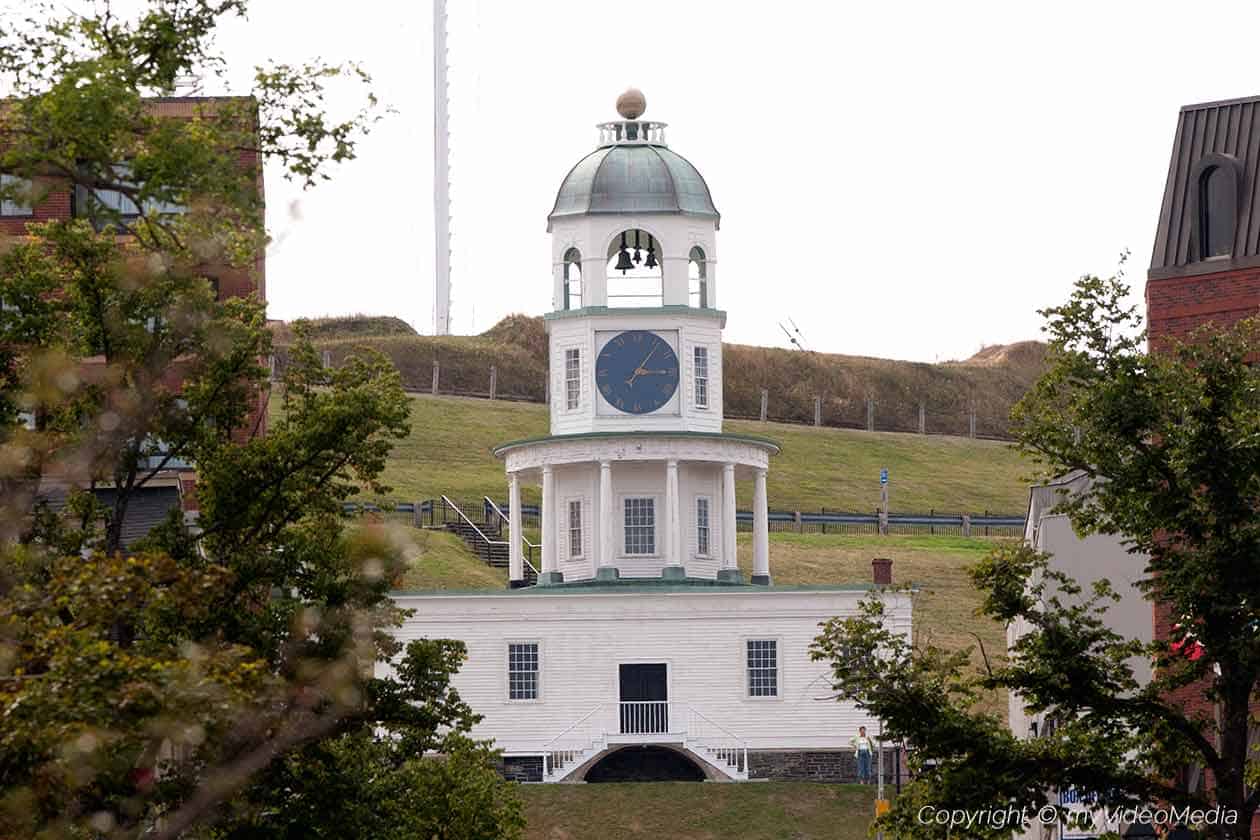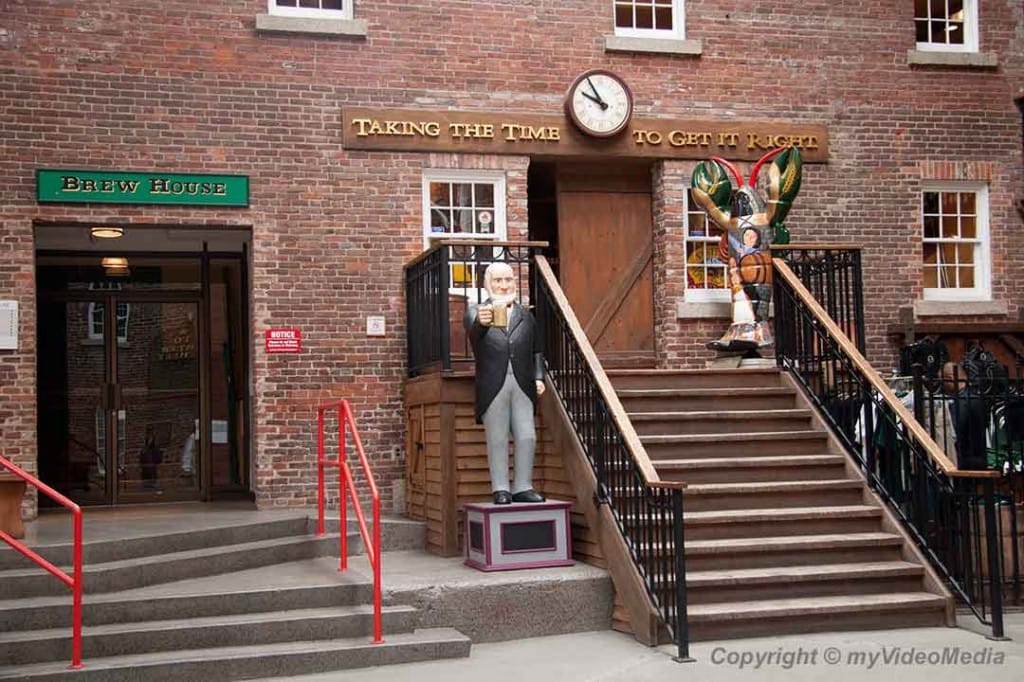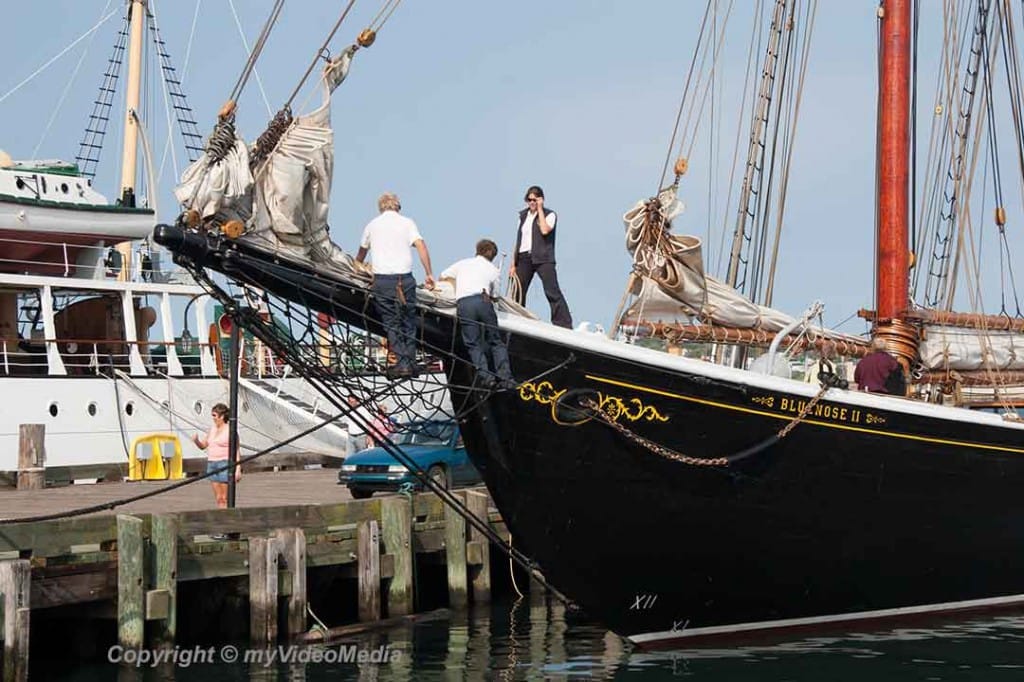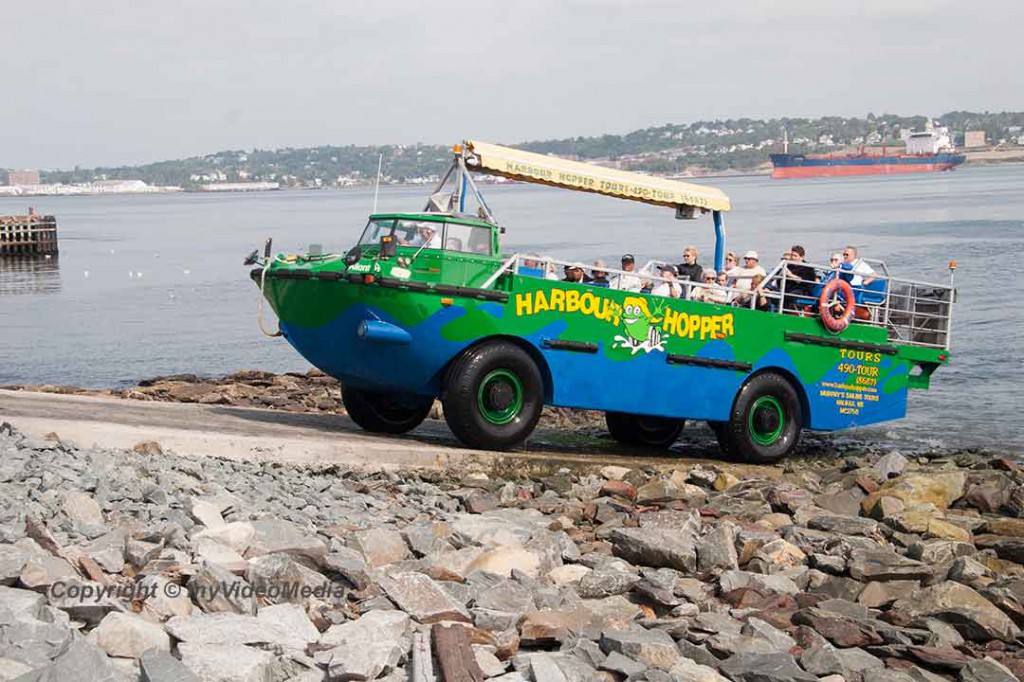Halifax, the capital of the province of Nova Scotia forms together with Dartmouth and Bedford a coherent settlement area for well over a quarter million people. Dartmouth and Halifax are separated by the harbor and since the mid 18th century connected by a ferry. In addition, two major toll bridges span the bay.
Since time immemorial, Halifax is a major port and thus it is not surprising that the largest military installation in Canada, the base of the Atlantic Fleet and the headquarters of the Coast Guard are settled here.
Please watch the video
You are currently viewing a placeholder content from YouTube. To access the actual content, click the button below. Please note that doing so will share data with third-party providers.
More InformationIn the center of the harbor front you see the restored brick buildings and warehouses, the so-called Historic Properties. Together with the disused harbor buildings, they serve today as pubs as well as shopping malls, museums and galleries for a solvent customers.

The exterior of the whole complex is true to the original. The Historic Properties are a much-visited attraction for tourists. Here one can watch the ships as well as glass blowers at work.
In the shopping arcades, the usual souvenirs are offered to the tourists. Those who seek patiently can find some rarities.

Always present is the emblem of the town, the bell tower set up at the beginning of the 19th century in front of the citadel on behalf of Prince Edward, Duke of Kent. It should teach the citizens more punctuality.
The casino with an attached hotel next to the Historic Properties dominates the northern part of the harbor front.

The historic Alexander Keith Brewery, another masterfully restored part of the leisure mile dominates the southern part.

Sometimes you can see the sailing ship Bluenose II in the harbor. In the early 20th century, the original Bluenose held the international fishing trophy as the fastest North American sailing ship in its class for eighteen years.
During World War II sailing ships lost their meaning; the Bluenose at first still served as a cargo ship and sank in 1946 in the West Indies. In the 60s, the Bluenose II was rebuilt to the original in Lunenburg and is now immortalized on the Canadian 10 cent coin.

Weather permitting, you can take a city tour with one of the original amphibious vehicles, the Harbour Hopper.
Please read on > Halifax and the Citadel
Text, photos and video: Copyright © myVideoMedia